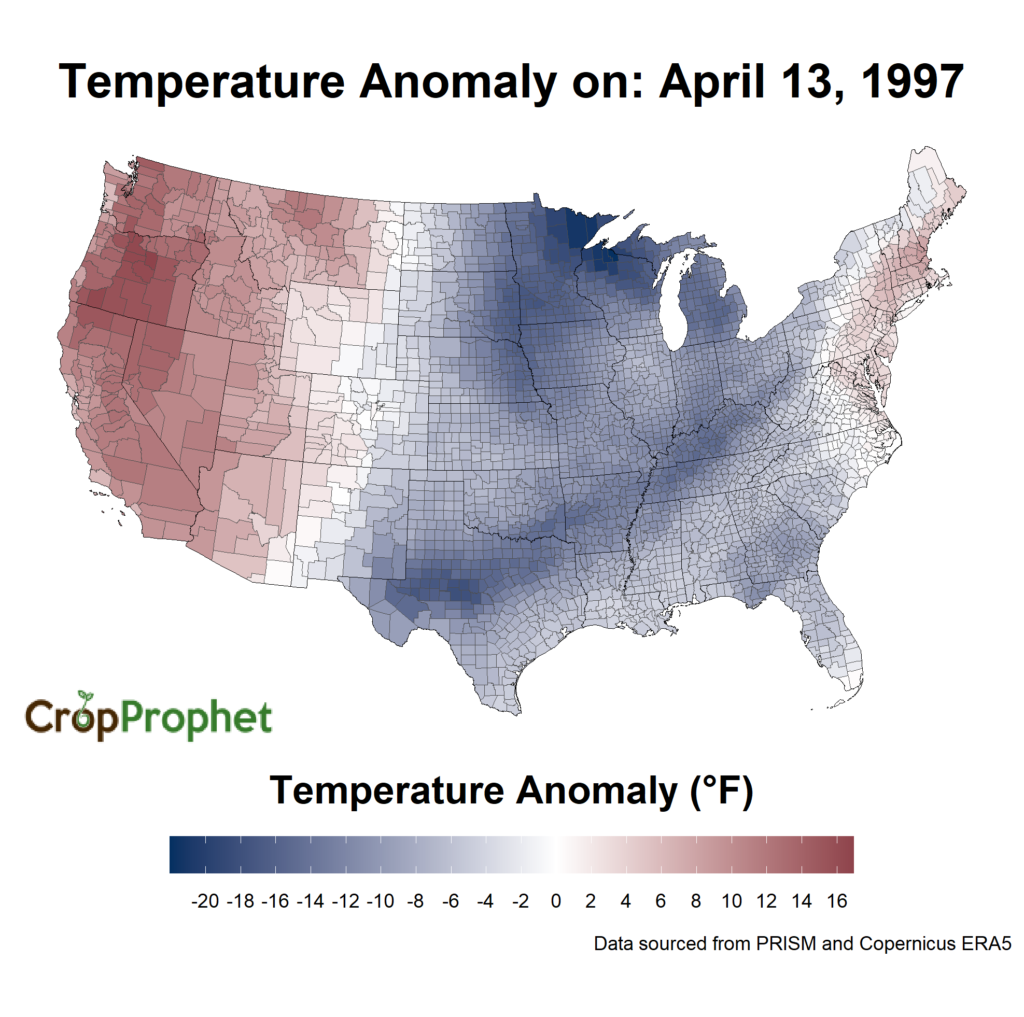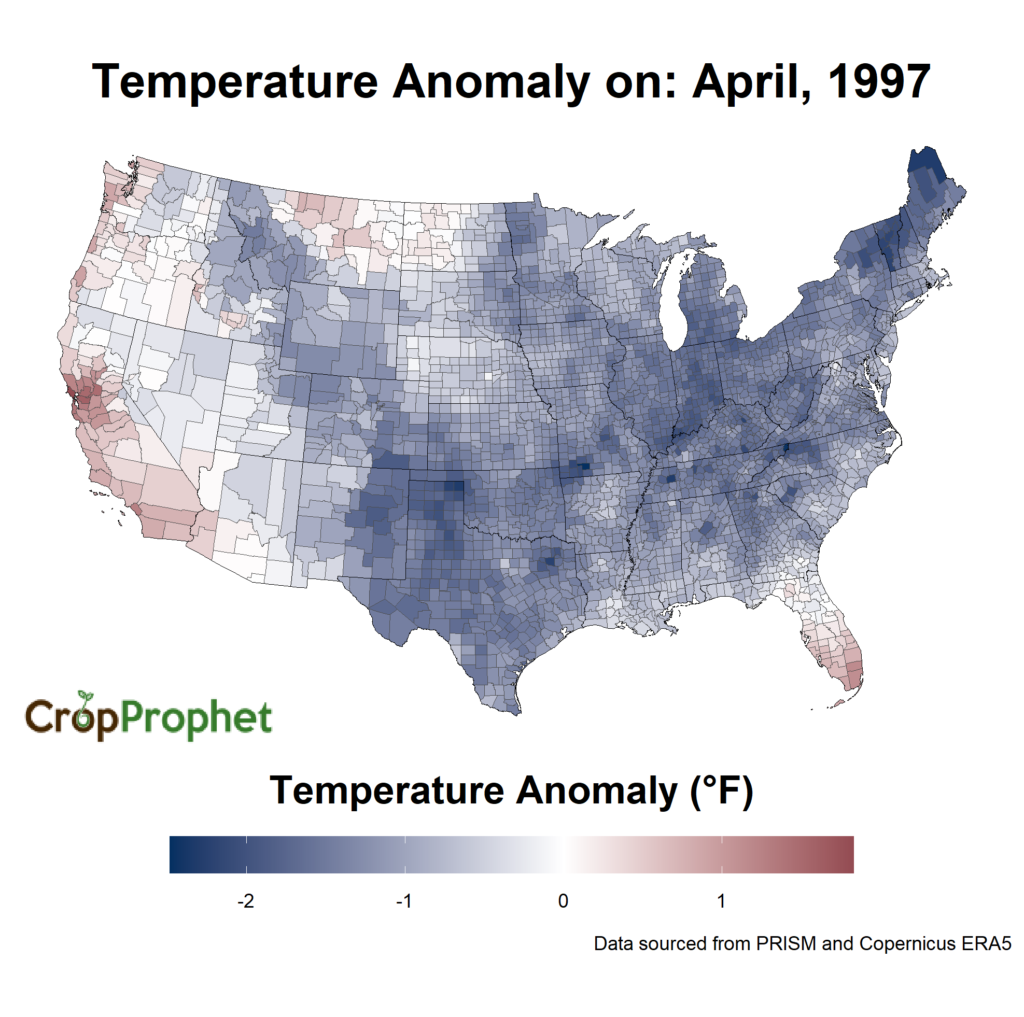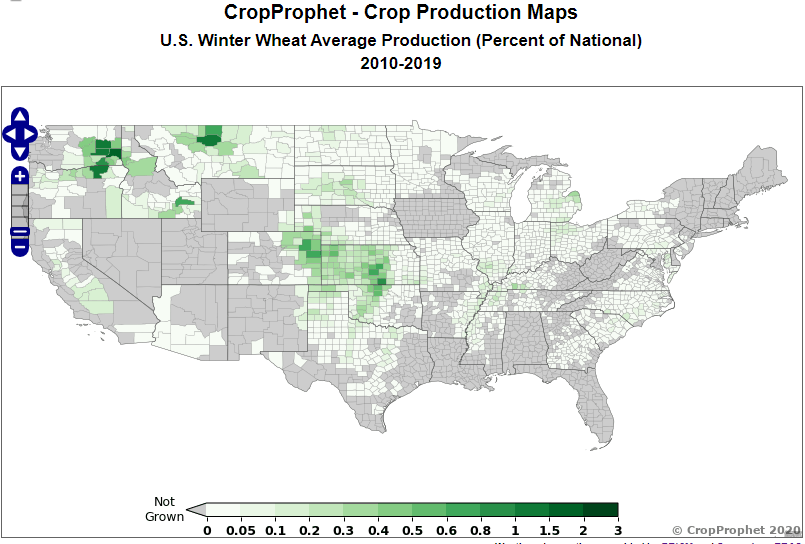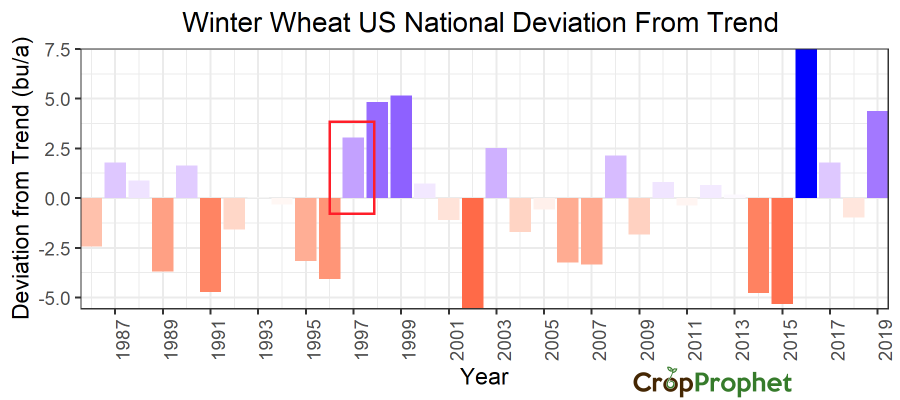A Winter Wheat Freeze
A winter wheat freeze during spring can significantly impact national production. April 12 and 13, 1997 saw a short but significant deep freeze in the midwest United States, resulting in potential damage to the US winter wheat crop (see graphic at end of post). The University of Nebraska Lincoln CropWatch points out that by April, winter wheat’s resistance to freezing temperatures is rapidly decreasing. The video below shows temperatures on the 13th of April were as much as 20 degrees Fahrenheit below normal, which settled the center of the country into a deep freeze.
It might be helpful to see just April 13.

In fact, April 1997 was substantially colder than normal temperatures, which in this case is measured from 1981 to 2019. The extensive regions of blue below show regions as much as 2 degrees Fahrenheit below normal.

The map below shows the regions of the United States that contribute the most bushels to winter wheat production. Comparing this map to the US freeze map above shows just about every region east of the Rockies experienced well below normal temperatures on April 13, 1997. The markets “soared” according to a NY Times article from the time.

Interestingly, despite the deep freeze on April 13th, the final winter wheat trend for 1997 was above trend.

Beneficial weather later in the spring and early summer helped the crop recover.
CropProphet provides US yield forecasts for corn, soybeans, and winter wheat. The forecasts are driven by the factor that matters most: the relationship between weather and crops. Our systematic approach to weather-based yield and production forecasting is beneficial because we are not reacting to market hype.